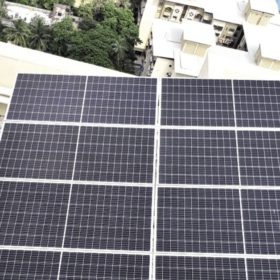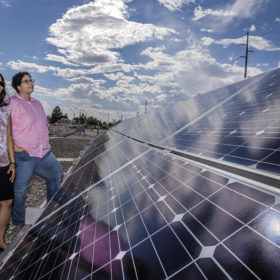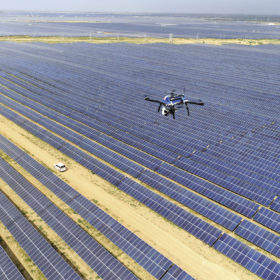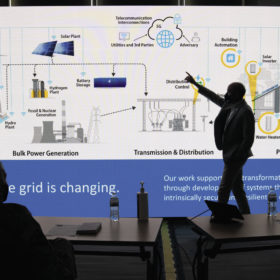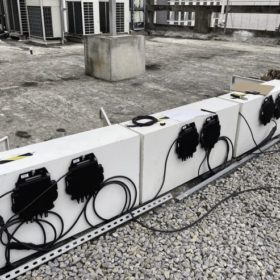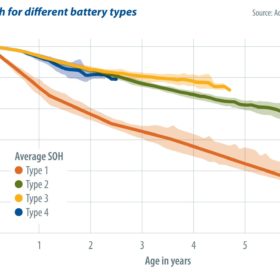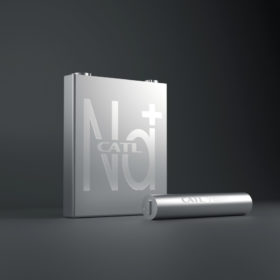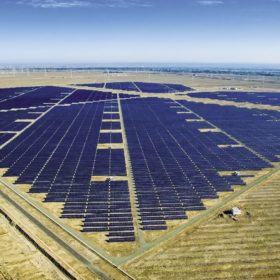Up to code for decarbonization
The International Energy Agency predicts that India will record the world’s fastest growth in energy consumption from buildings through 2040. The energy demand could create a big market for solar installers and equipment providers, particularly in the commercial and industrial sector. While building codes now include provisions for renewable energy integration, effective implementation will be key to ensuring compliance, reports Uma Gupta.
Forecast for foresight, and prosper
At the risk of stating the obvious, PV performance will always be inextricably linked to the weather. Cloud cover significantly influences power output and severe weather events – including high winds, heavy snowfall, fire, and hail – can lead to module or structural damage. And with climate change making extreme weather events more common, the value of forecasting and understanding the worst Mother Nature can throw at a solar array is increasing.
Nothing simple about O&M
New investors and technological complexity demand new approaches to O&M service provision, argues NovaSource’s Timo Moeller. With larger PV fleets and the ability to process the operational data of generation, pure-play O&M may continue to deliver on solar’s cost learning curve.
Getting smart about solar
As solar PV increases its share in the world’s energy mix, it is becoming increasingly clear how valuable the data gathered from renewable energy generators is in informing important decisions about operation, maintenance and grid integration. Yazeed Al Mousa examines the latest applications for artificial intelligence in PV project development and operation.
New consensus in cybersecurity
As power systems integrate more digital and inverter-based devices, the guidelines and technical standards for these resources are evolving, and none as quickly and urgently as cybersecurity standards. New approaches to cyber defense are now needed to protect more interconnected systems with diverse owners, manufacturers, and system architectures. However, current cybersecurity standards for energy devices are still patchy. Upcoming efforts are aimed at changing that, reports NREL’s Connor O’Neil.
Cloud looms over PV’s silver lining
Should heterojunction solar technologies be temporarily shelved? Could copper plating replace screen-printed silver conductive surfaces in cells? Why are tandem cells a likely successor to PERC? Brett Hallam recently sat down with Natalie Filatoff in Sydney to explain the findings of a new study by UNSW that sought to answer these controversial questions.
pv magazine test: Big modules, new beginnings
Earlier this year, the pv magazine test outdoor array in Xi’an, China underwent extensive modifications so it could accommodate the form factors and electrical characteristics of new modules based on larger wafer formats. George Touloupas, senior director of technology and quality at CEA, takes us through the new system and the reasons why the modifications were needed, as well as the role of newly installed microinverters supplied by AP systems.
Battery performance, uncovered
Batteries are taking the energy world by storm. From residential home storage systems to large-scale installations, today’s society increasingly relies on powerful batteries. And, as we all know, with great power comes great responsibility. But, how can we ensure that our use of batteries today is responsible, cost-effective, or even safe? Kai-Philipp Kairies, CEO of Accure Battery Intelligence, shares some of his experience gained from monitoring more than 750 MWh of various storage applications.
Complementary storage
Lithium-ion batteries are a fantastic crutch for the renewable energy transition. It’s not all roses, though: Short duration limits, and potentially dangerous thermal runaway in rare circumstances, means the hunt continues for alternative electrochemical batteries. However, alternatives will largely complement lithium-ion batteries, rather than supersede them. Blake Matich looks at promising options to keep an eye on.
What to expect from China’s green power trading
On Sept. 7, the country that consumes more power than any other nation introduced green energy trading. Two regions in China, Beijing and Guangzhou, were selected for the initial introduction of what will become the national green power trading market. Although it is still a pilot program, the market is expected to have far-reaching impacts on China’s energy transition away from coal. What do you need to know about it? Vincent Shaw in Shangahi sets out the details.
